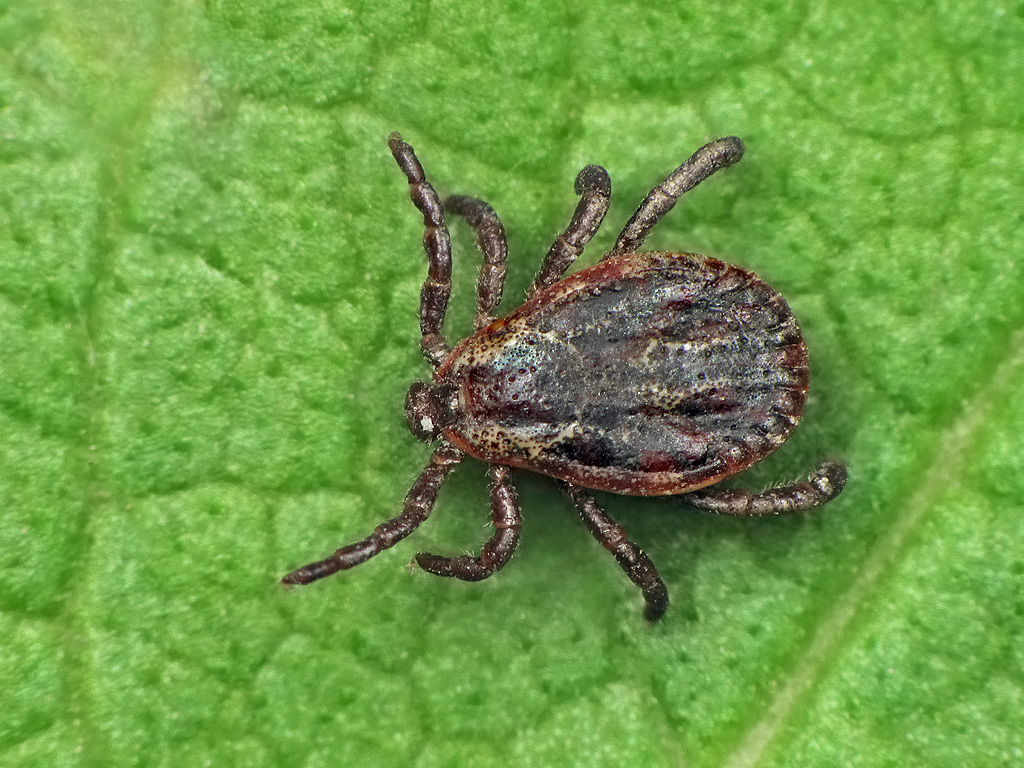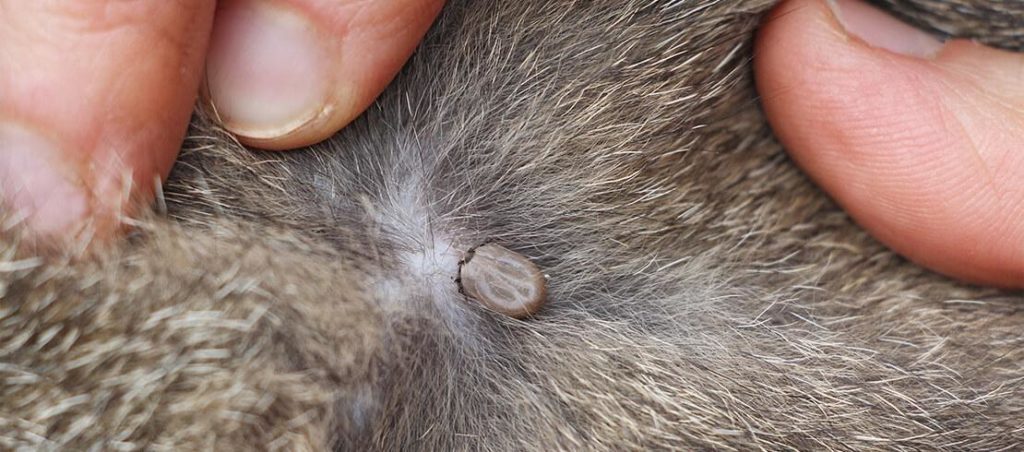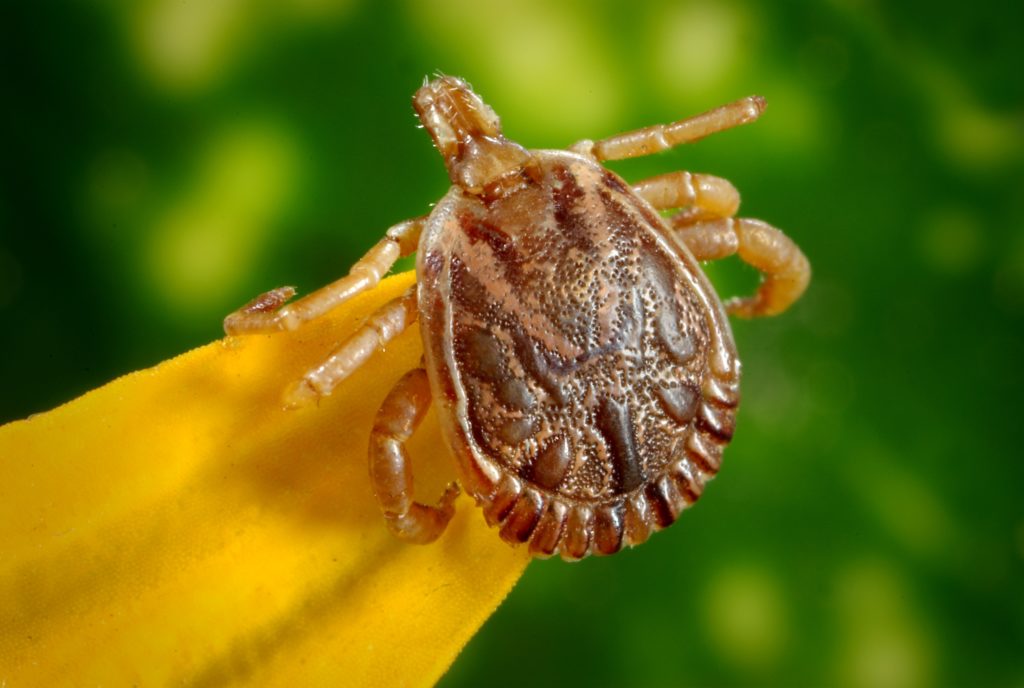Ticks can not only cause nasty bites that are sore and may become infected; they can also carry a number of infectious diseases that they transfer to our pets and us. These diseases can be very serious and preventing tick bites is much better than having to treat these diseases.

We recommend using anti-parasite treatments that offer tick protection all year round for complete peace of mind. We also recommend checking your pet’s skin regularly for any signs of inflammation, growths and parasites.
Ticks can vary in size and colour. Once they find themselves on a suitable meal, they wander around for a little while to find a tasty spot. Their favourite spots tend to be around the face and ears, in between toes and in the creases between the legs and body. Once satisfied with their location, they then bury their mouths into the skin to suck blood which attaches them very firmly to the skin. As they feed their body swells up, like a balloon anchored by their head. It can sometimes be difficult to tell whether the new lump is a growth or a tick so please pop in to check with us if you are unsure.

If you find a tick and want to remove it yourself, care must be taken to ensure that the head is removed cleanly. If the body is just pulled off, then the head can continue to cause pain and infection. We recommend using a specialised tick removal tool. l Start by placing the tool between the tick and your pet’s skin and then slowly rotating it to twist the tick off. Once removed you can clearly see the ticks head and six little legs in the grasp of the tool.
Ticks need to be disposed of appropriately so that they cannot crawl off to bite another animal. We suggest placing the tick in a small container of alcohol or wrapping it up in sellotape. Different species of ticks carry different diseases, so it may be worth trying to get a good close up photo of the top and bottom of the tick so that it can be identified later on if your pet starts to show symptoms.

It’s likely that if you find a tick on your pet, this is the tip of the iceberg and they have actually been bitten before. Cats, with their thick coats and barbed tongue, are very good at concealing ticks from us and also grooming ticks off of themselves but this does not prevent potential infections. Prevention is certainly better than a cure so we recommend treatment to avoid ticks, and we’d much rather you never see one on your pet!
Contact us to discuss the preventative options available for your pet.